Whether you believe it or not, the comfort of a hiking boot directly affects the overall experience of your hiking expedition. Most new pairs of hiking boots sold in shoe stores are stiff and tight, and they must be worn for a while before they fit properly.
Before going on any serious hiking trail, it is advisable to properly break in your new hiking boots by walking with them for a couple of miles, depending on how stiff they are.
Different shoe materials often determine how long they will need to be worn before they fit properly. Synthetic materials are often observed to be less stiff than natural materials.
When planning to go on a hike, it is sensible to buy your desired hiking boots a month or two before the planned date, so you will have more than enough time to properly break them in.
Many hiking boots can take two or more weeks to break in, depending on how many miles you walk in them and also the materials they are made with.
When shopping for new hiking boots, make sure you don’t buy undersized hiking boots because they will be very difficult, or even impossible, to expand to fit.
You should properly utilize the power of the internet or consult with a sales representative when you want to purchase new hiking boots to select the right pair.
We believe that your aim in reading this article is to find out how far you can walk in different types of hiking boots before they eventually break in. Relax and read on. We will try to answer all your demanding questions in the best way possible.
Contents [hide]
How many miles does it take to break in hiking boots?
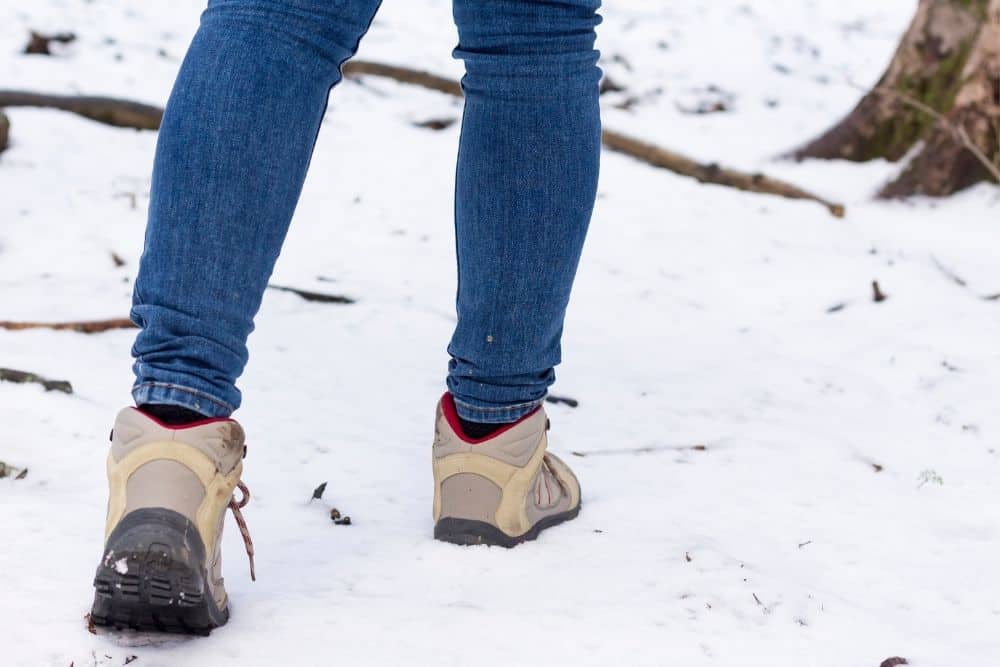
All new hiking boots usually require breaking-in periods, although leather hiking boots require longer periods due to the nature of leather.
Aside from using any other conventional or unconventional methods to stretch hiking boots to make them fit, you can also walk in them casually around the house or at safe distances until they break in.
In this article, we shall be looking at how many miles it takes for each type of new pair of hiking boots to break in with regards to the materials they are made of.
It is not completely impossible to buy well-fitting hiking boots that you can comfortably use straight out of the box without breaking in. However, it all depends on how knowledgeable you are about sizes and the nature of your feet—and sometimes a bit of luck.
Part of the reason some people find it hard to get a perfectly matching pair of hiking boots is that manufacturers use a set of predefined sizes in making their boots.
If your feet happen to fall outside of their predefined sizes, you will end up with a pair that is either slightly bigger or smaller than your feet.
When purchasing hiking boots, enquire if they offer return services and the grace period of their return services in case the boots fail to fit even after doing everything possible to make them fit.

Walking long miles in hiking boots with single-layered socks can help your new hiking boots break in faster.
No hiker intentionally enjoys getting foot pain and blisters on purpose or for showoff. This is the reason why hikers don’t use hiking boots for hiking until they are properly broken in.
The tricky part about buying new hiking boots is that even hiking boots that initially seem well-fitting can cause a lot of pain and blisters when used on terrain that they were not designed to handle.
Breaking in new hiking boots might cost you time, effort, and energy. However, once your boots are properly broken in, your feet will forever remain free and happy.
Low-cut, trail runner, or lightweight hiking boots usually require fewer miles to break in properly. On the other hand, if you own heavy-duty leather mountaineering boots, you are expected to put more miles on them while trying to mold them to suit the actual size of your foot.
With that, we will now be looking at how many miles it takes to break in new hiking boots with regards to how they are constructed and the materials they are constructed with.
High-Cut Hiking Boots
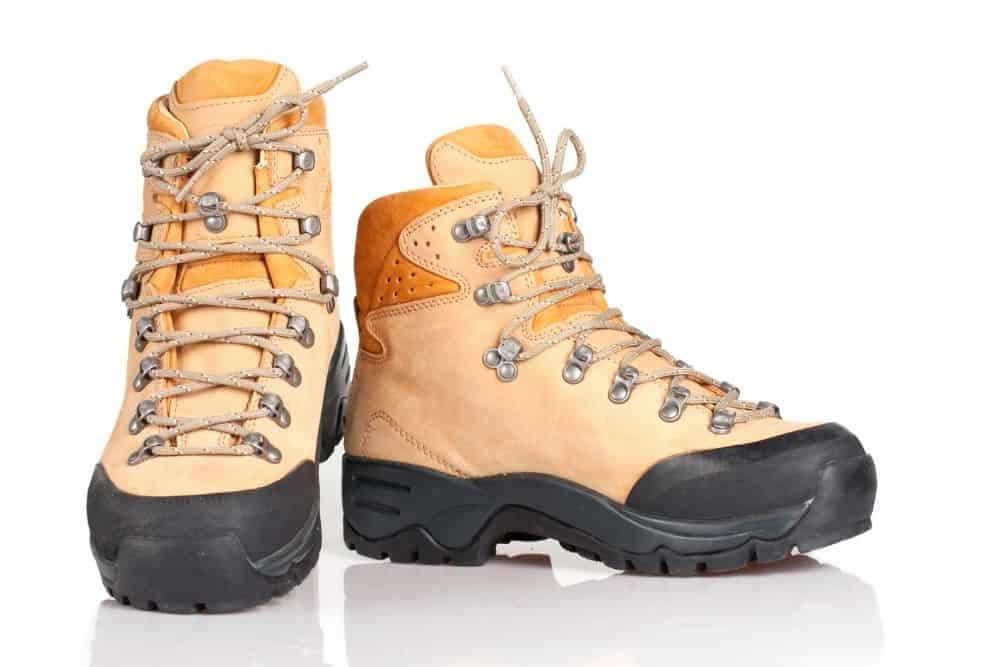
This form of hiking boot usually extends and covers your ankle while providing adequate support on rugged mountain terrain. They also provide adequate stability for hikers who usually hike with heavy backpacks.
It is important to note that high-cut hiking boots usually require more time to break in, unlike some other hiking boots. Most mountaineering boots usually fall under this category and require more miles to break in.
High-cut hiking boots can take up to two weeks and 100 miles in total to break in properly. High-cut hiking boots are usually crafted to be more rugged than normal shoes.
However, for them to be able to break in properly, they must first be worn like casual shoes. It is important to wear your boots on terrain similar to your hiking terrain during the break-in process.
The tougher a hiking boot is constructed, the longer it usually takes for them to break in properly. The materials used in designing high-cut hiking boots can vary from a mixture of rubber and leather to just leather.
Mid-Cut Hiking Boots
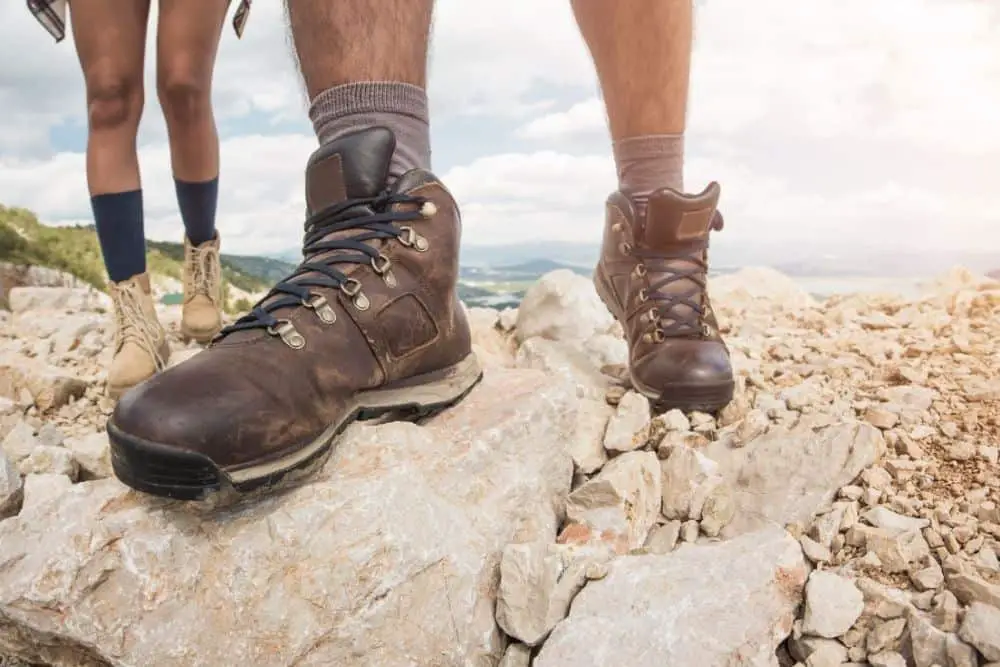
This design of hiking boots may be comfortable, but is not usually suitable for aggressive and extremely steep terrain.
You can gradually break into mid-cut hiking boots by taking baby steps or random walks while wearing a thick pair of socks made of synthetic fibers or wool.
You are to use your mid-cut hiking boots like indoor slippers for the first few weeks after purchasing them. By doing this, you keep your feet safe from injury while increasing the mileage required to properly break in these kinds of hiking boots.
Speaking of the stretch of distance required to break in hiking boots, the mid-cut hiking boot often requires as much as 80 miles of consistent trekking to break in properly, depending on the material it is made of.
Mid-cut hiking boots made of leather typically require more time to break in than those made of synthetic materials. One smart thing you can do to break them in is to wear them while doing domestic chores.
While trying to break in your new mid-cut hiking boots, always make sure to safely keep the receipt of purchase and also keep the hiking boots as pristine as possible.
Returning a new hiking boot that continues to give you problems is usually easier when you have the receipt handy and the boots have no marks or dents that void their warranty.
Low-Cut Hiking Boots
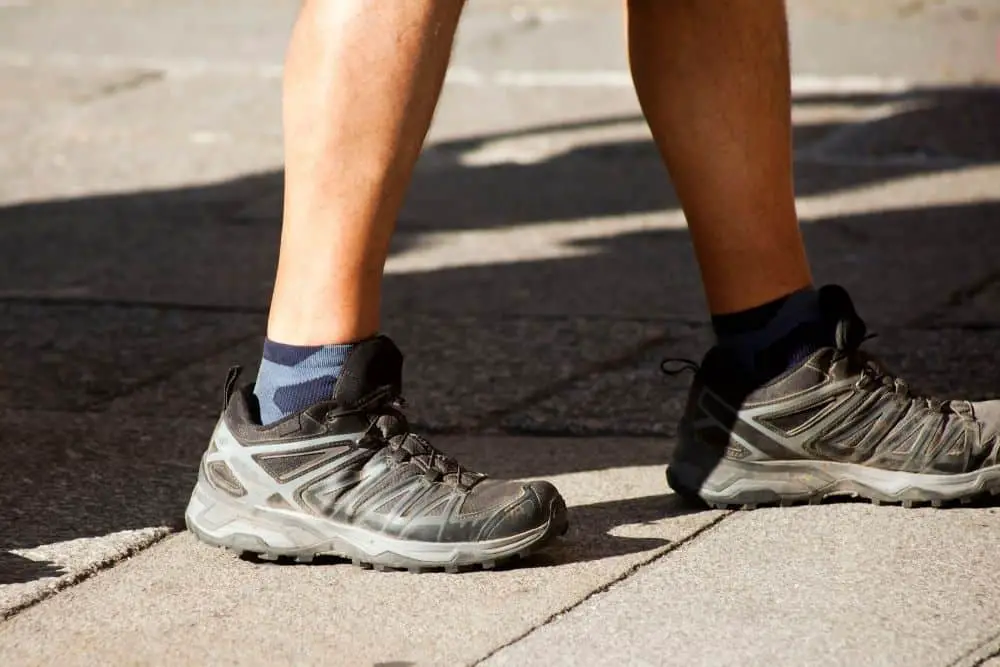
Low-cut hiking boots usually allow for the greatest possible array of movements while engaging in hikes, but they expose the ankle to natural elements that can cause harm.
This form of hiking boot is mostly used for less-demanding terrain and hiking trails. They are usually designed with durable synthetic materials, which makes them easier to break in when used for casual or indoor walks.
Low-cut hiking boots can take 50 to 80 miles of trekking to break in properly. Trail runners are the most popular low-cut hiking boots, and they are usually made with lightweight synthetic materials that ease movement.
After a few miles in your new low-cut hiking boots, the insole and the cushioning usually start to take the shape of your feet. This type of shoe rarely gives blisters during its break-in period, especially when used indoors.
Leather Hiking Boots
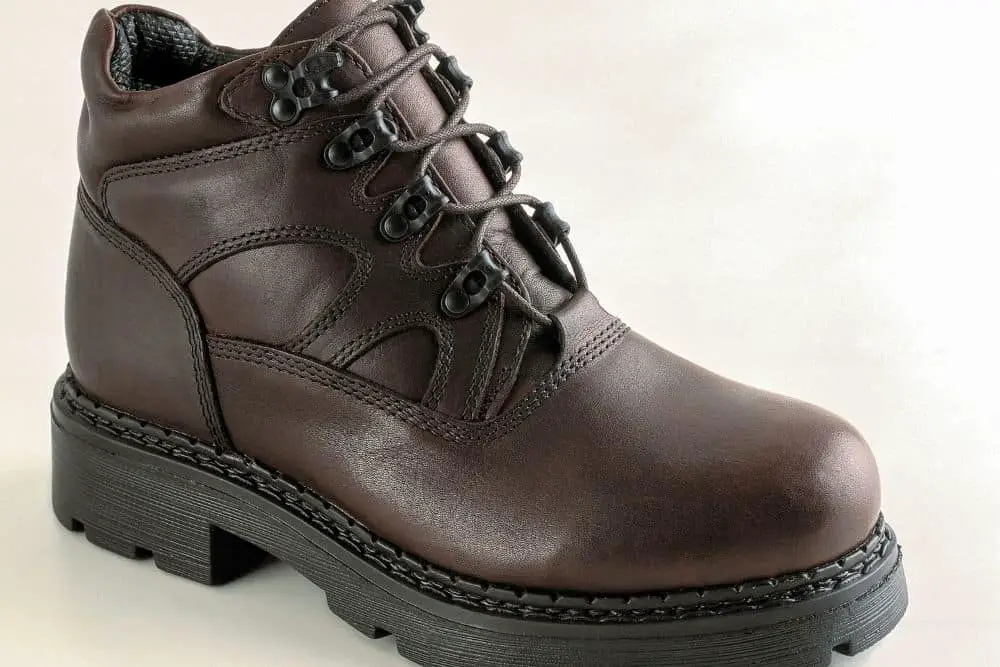
One of the most important cravings of most hikers is owning a comfortable pair of affordable, quality leather hiking boots. However, the most difficult aspect of owning new leather hiking boots is the fact that they aren’t easy to break in.
Hiking boots produced with full-grain leather are often weather-resistant and durable. These kinds of boots are usually less breathable, heavier, and more suitable for long and rough hiking trails.
The cost-effective and efficient way of breaking in new leather hiking boots is by wearing them around the house every day over a calculated distance of 5 miles per day for a period of two to three weeks.
This will eventually amount to a total walking distance of approximately 105 miles, which can even take longer depending on the boot’s design.
Breaking in new leather boots slowly will prevent you from getting blisters. By not using an aggressive break-in method, you save your boots from any potential harm that may also void your warranty.
Fabric Hiking Boots
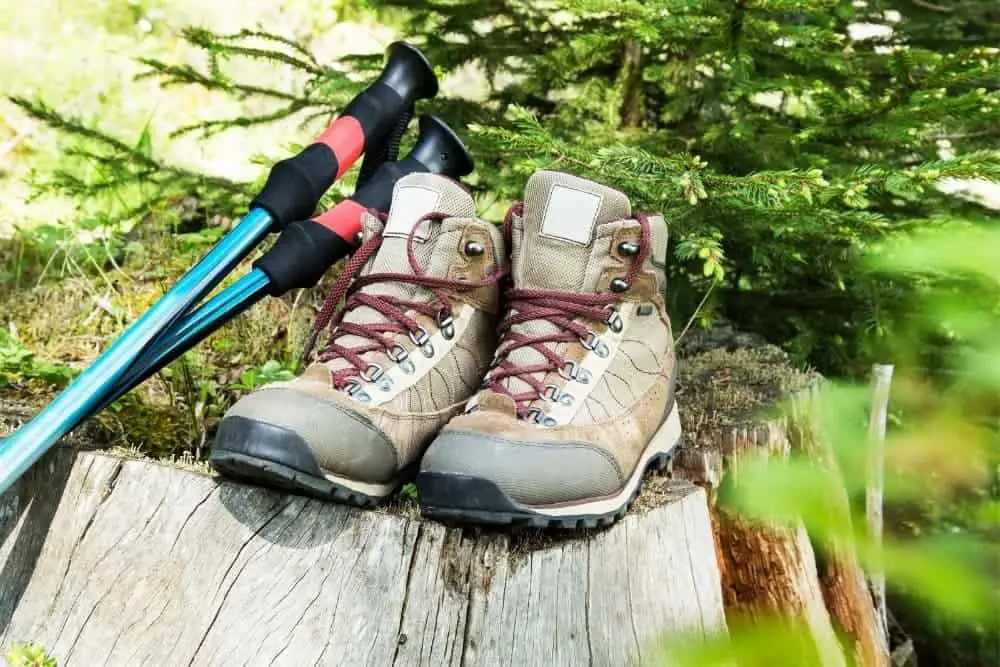
Hiking boots were originally made from leather before evolving into other forms of materials.
Most hiking boots we think are fabric aren’t completely fabric; they are sometimes a mix of fabric panels with some areas made from suede or other forms of leather.
Fabric hiking boots are suitable for easy movement and flex, which makes them more comfortable than most other hiking boots out there.
The characteristics of trail fabric hiking boots include breathability, lightweight, comfort, and durability. All these characteristics combine to make fabric hiking boots easier to break in.
A fabric hiking boot can break in perfectly after a casual walking distance of 70 to 80 miles. The light nature of fabric hiking boots helps them break in more easily compared to heavier hiking boots.
Heavy hikers tend to break into fabric hiking boots faster than lightweight hikers. Hikers with larger feet tend to take more time to properly break into new fabric hiking boots than those with smaller feet.
Suede Hiking Boots
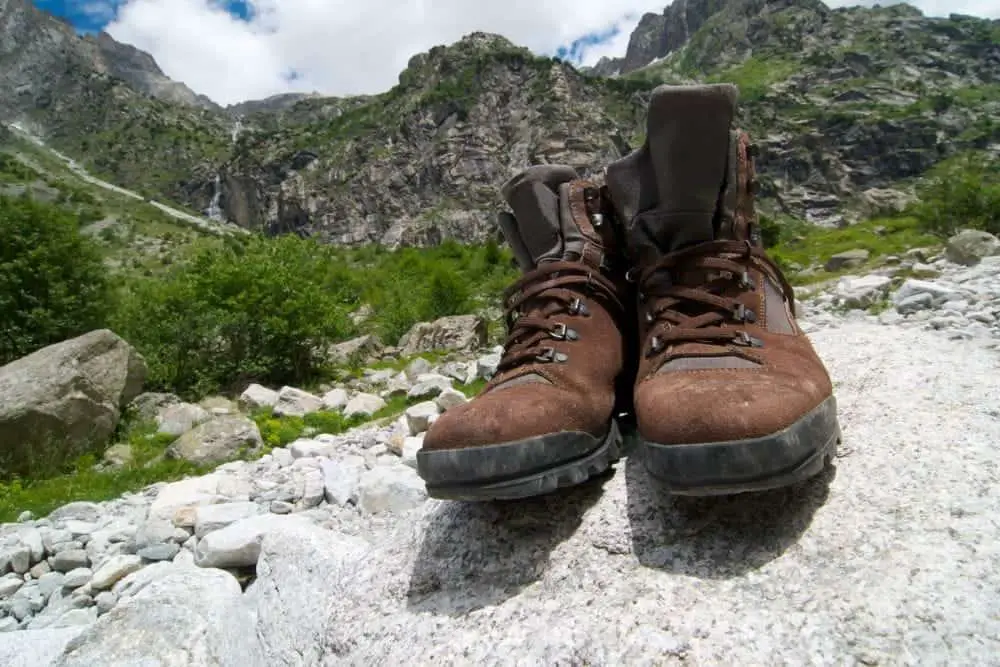
Suede is a unique leather material gotten from an animal hide’s underside. It is usually characterized by a smooth and soft surface.
Suede is a global fashion item that isn’t only used in making hiking boots alone; it is also used in making other fashion accessories like jackets, caps, belts, gloves, bags, etc.
Full-grain leather is usually softer than suede, which makes it easier to break in than full-grain leather. A suede hiking boot takes approximately 80 miles of walking distance to break in properly.
Being softer and thinner than standard leather, suede gives hiking boots an interesting structure and appearance. Suede hiking boots might be very comfortable on the feet, but they are somewhat difficult to maintain because they damage easily.
Other factors affecting the breaking in of hiking boots
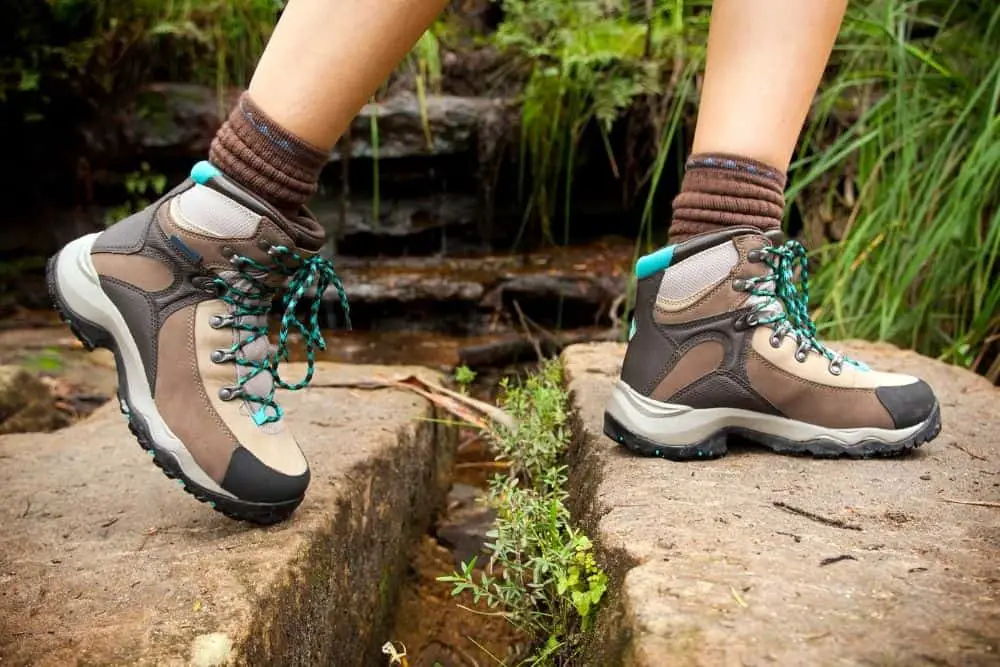
Aside from the kind of material a hiking boot is made of, other common factors can also affect the number of miles you need to walk in a new hiking boot before it can properly break-in. Some of the factors are listed below:
- Foot Health: If your feet are healthy, you will walk in your hiking boots with a good gait and confidence, which will help them break in faster. Those with injuries or fractures on their feet will find it difficult to walk in their new hiking boots, which will increase the number of miles required to break them in.
- Speed: The faster you walk on a hiking boot, the more miles you will be able to cover per minute, which in turn determines how fast the hiking boot will break in.
- Terrain: The kind of terrain you are walking on can have both positive and negative effects on the hiking boots you are using. Hiking on rough terrain will cause a hiking boot to break in faster than on flat surfaces.
- Experience: Your level of experience in hiking can also affect how many miles you have to walk in your new hiking boots before they break in. Experienced hikers usually know how to wear their new hiking boots to make them break in faster.
- Weather: Walking with new hiking boots in warmer weather will usually help them break in faster than in very cold temperatures.
Conclusion
Even though walking around casually in your new hiking boots usually looks like a quick solution to breaking them in, never push too hard to avoid causing harm to your feet. Take the boots off as soon as you feel pain or pressure on any part of the boots.
You must learn to take things slow when trying to break in new hiking boots because trying to rush it might result in blisters and aches. One to four weeks is okay if you want to break in hiking boots.
While trying to break in hiking boots, remember not to do anything like using them in the mud that may void their warranty. Always keep them clean in case you may need to return them—and you should if you still feel pain in any area after weeks of breaking them in.

